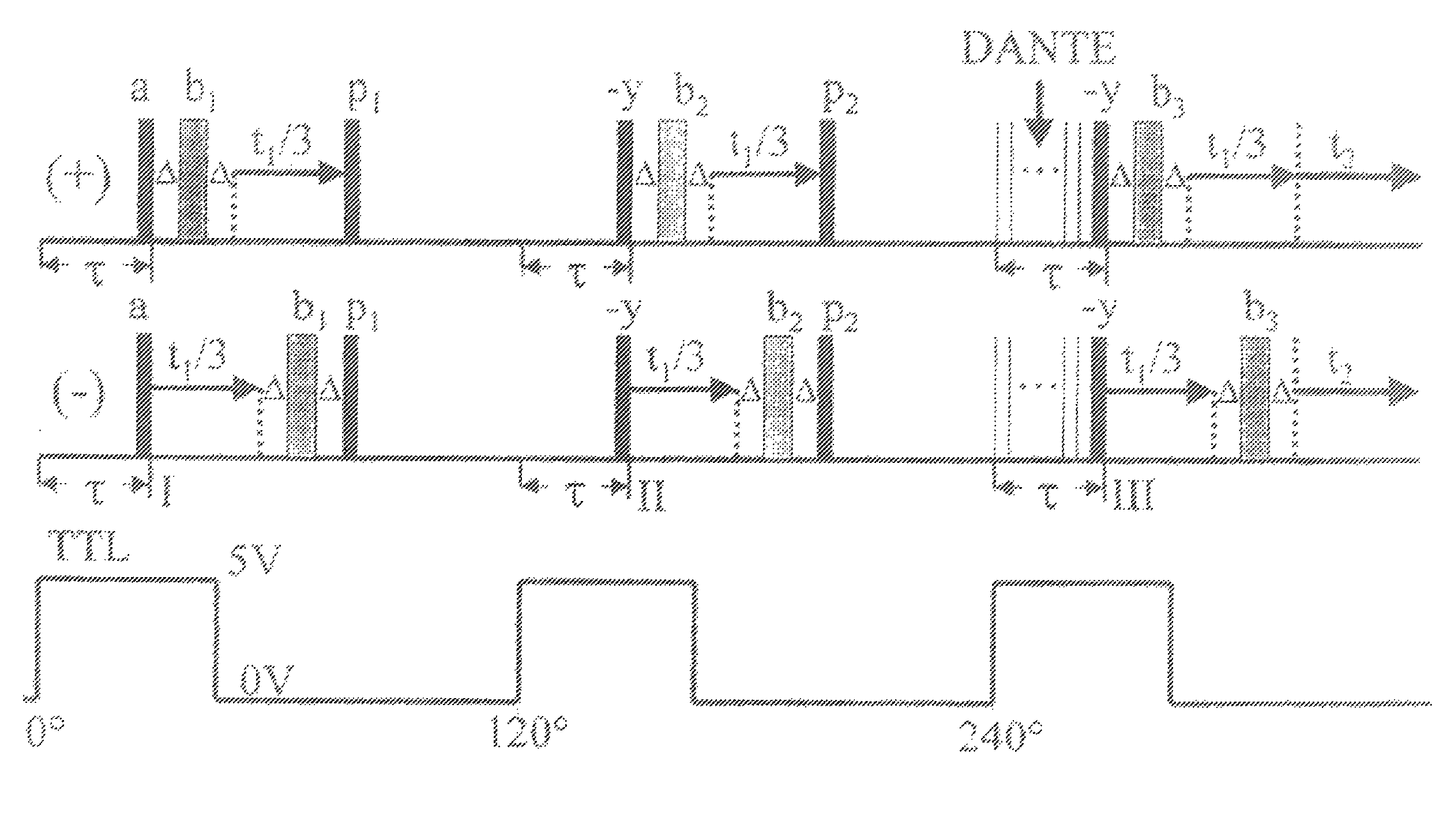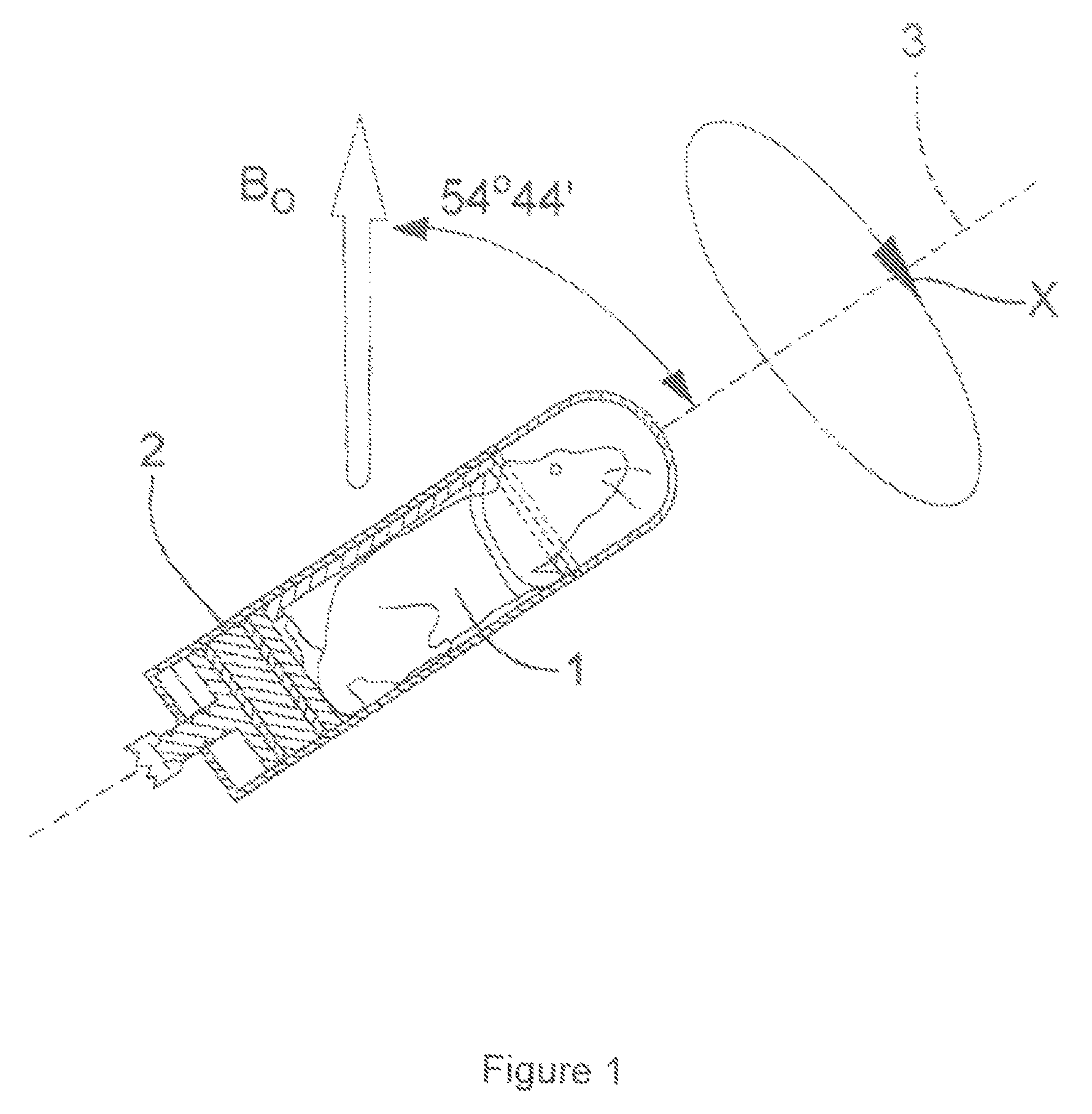Methods for magnetic resonance analysis using magic angle technique
a magnetic resonance analysis and magic angle technology, applied in the field of magnetic resonance analysis, can solve the problems of net nuclear magnetization, population imbalance between energy levels, and widening of the nmr resonance line, and achieve the effect of reducing unwanted signals
- Summary
- Abstract
- Description
- Claims
- Application Information
AI Technical Summary
Benefits of technology
Problems solved by technology
Method used
Image
Examples
example 1
LOCMAT Using a Static Pulsed Field Gradient
The protocols for the in vivo studies were approved by Pacific Northwest National Laboratory Animal Review Board. Ten, ˜70 day old female BALBc mice with a body weight of about 20 g were used for the LOCMAT experiments. Prior to spinning, the animals were anesthetized with a mixture of 0.3 ml Xylazine at a concentration of 20 mg / ml and 1.0 ml of Ketamine at a concentration of 100 mg / ml. The cocktail mixture was then administered by intraperitoneal injection at 1.4 ml / kg mouse body weight. The anesthesia lasted for 1.5-2.5 hr. When anesthetic takes effect the eyes of the animals are lubricated to prevent them from drying out.
The mouse was then placed in a special mouse holder that fits inside a rotor with an inner diameter of 34 mm that was part of a mouse-MAS-imaging probe. The residence time of a mouse in the magnet was no longer than 120 minutes, wherein fresh air and cooling were provided to promote survival. At the end...
example 2
LOCMAT Using Rotating Pulsed Field Gradients
To select a particular voxel, a 2D scout image with its image plan perpendicular to the axis of sample rotation was acquired. Such a scout image can be acquired using the modified version of a standard 2D spin-echo MRI pulse sequence given in FIG. 11 on a slowly rotating sample.
An example is illustrated in FIG. 20 using a crab apple and a sample spinning rate of 1.5 Hz. The slice thickness of the imaging was 2 mm. In FIG. 20, a seed and air spaces inside the apple are clearly seen without significant motion blurring.
The performance test of LOCMAT using rotating pulsed field gradients is demonstrated in FIG. 21 using a crab apple. The diameter of the crab apple (FIG. 21A) is roughly 20 mm. The apple contains two seeds (the seeds were pictured after the study when the apple was crushed and seeds taken out). The dimension of one seed is about 2.6 mm, as shown in FIG. 21A. The rotating scout planning image is shown in FIG. 21B (same as FIG. 20...
PUM
 Login to View More
Login to View More Abstract
Description
Claims
Application Information
 Login to View More
Login to View More - R&D
- Intellectual Property
- Life Sciences
- Materials
- Tech Scout
- Unparalleled Data Quality
- Higher Quality Content
- 60% Fewer Hallucinations
Browse by: Latest US Patents, China's latest patents, Technical Efficacy Thesaurus, Application Domain, Technology Topic, Popular Technical Reports.
© 2025 PatSnap. All rights reserved.Legal|Privacy policy|Modern Slavery Act Transparency Statement|Sitemap|About US| Contact US: help@patsnap.com



